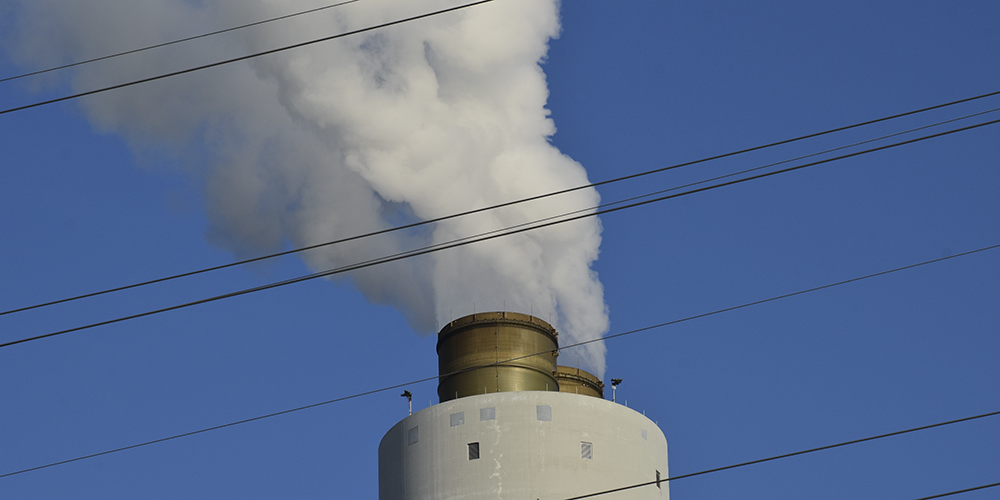What Is Air Pollution and Where Does It Come From?
There are many things that can affect the air that we breathe. Springtime pollen, car exhaust, even smoke from wildfires from across the country can impact our air quality.
Pennsylvania’s environment has been, and continues to be impacted by pollution from:
- stationary sources like factories, power plants and commercial facilities
- mobile sources such as automobiles, trucks, airplanes, and trains
- many small “area” sources like home heating, lawnmowing and gas stations
- and natural sources like forest fires and dust storms.
How much these pollution sources affect our daily air quality can depend on the prevalence of these sources as well as the weather.

The Impact of Air Pollution
Good air quality is key to human health and the environment. Breathing unhealthy air can cause health problems, especially for the very young, the very old and those with compromised respiratory systems. Air pollution has been linked to many health problems including respiratory illness, heart attacks, stroke, and cancer.
Worldwide, over seven million people die each year from health problems related to air pollution. In a study published in 2020, researchers from the Massachusetts Institute of Technology reported that over 4,800 Pennsylvanians died prematurely in 2018 because of air pollution.
In addition to the tremendous toll on human life, air pollution can also impact water quality, harm wildlife and vegetation, and impair visibility in our natural spaces.

Criteria Air Pollutants
The United States Environmental Protection Agency (EPA) has identified six pollutants as criteria air pollutants, so named because the EPA sets national air quality standards based on criteria using the latest scientific information regarding their effects on health or welfare.
The six criteria air pollutants are: carbon monoxide, lead, nitrogen oxides, ozone, particulate matter and sulfur dioxide.
- Carbon monoxide (CO) is a colorless, odorless, poisonous gas which is a byproduct of incomplete combustion.
- Lead (Pb). Battery manufacturing and metal processing are major sources of lead emissions.
- Nitrogen oxides (NOx) are formed when fuel is burned at a high temperature, such as in automobiles and power plants. NOx and volatile organic compounds (VOCs) are important precursor chemicals that form ground-level ozone (O3) in the presence of sunlight and warm temperatures.
- Ozone (O3). Ground-level ozone forms during the summer months and is an irritant to the lungs.
- Particulate matter (PM) is the general term used for a mixture of solid particles and liquid droplets found in the air. These particles, which come in a wide range of sizes, may be emitted directly by a source, or formed in the atmosphere. Fine particulate matter (PM2.5) is small enough to pass through the respiratory system and enter the lungs.
- Sulfur dioxide (SO2) is primarily emitted by industrial furnaces or power plants burning coal or oil containing sulfur.
Each of these pollutants have adverse effects on human health and the environment. In order to address the public health risks posed by these pollutants, the federal Clean Air Act was enacted to regulate air emissions from stationary and mobile sources.

Government Agencies Work to Reduce Air Pollution
As required by the Clean Air Act, the EPA has set National Ambient Air Quality Standards (NAAQS) for the criteria pollutants. Using the latest science, the EPA evaluates these ambient standards on a regular basis to ensure they are protective. Based on these evaluations, the standards have been made more protective since the 1970s. The Act is administered by the EPA as well as state, local and tribal agencies.
Here in Pennsylvania, the Pennsylvania Department of Environmental Protection (DEP) and the Philadelphia and Allegheny Health Departments administer air quality permitting and inspection programs to meet the NAAQS. These agencies continuously monitor for these principal pollutants (and others) to ensure attainment of the standards.
Through the work of DEP and the Philadelphia and Allegheny Health Departments, as well as shifts in manufacturing and electrical generation, there has been a significant reduction of criteria pollutants from stationary sources. Since 2014, (NOx) has been reduced by 7%, PM2.5 has been reduced by 14%, SO2 by 84% and VOCs by 6%.

Pennsylvania’s Air Quality Is Improving, but More Work Remains
The reduction in criteria pollutants clearly shows that progress has been made in the fight to improve air quality. Pennsylvania may now have its best air quality since World War II, but more work remains. Despite the gains made, air pollution in Pennsylvania continues to impact our health and the environment.
In addition to the regulatory and enforcement actions of government agencies, there are things we all can do to help reduce air pollution such as taking public transportation, buying fuel efficient vehicles, and using less energy at home.
Through regulations, permitting, inspections, and enforcement, DEP continues to work towards cleaner and healthier air quality in Pennsylvania.